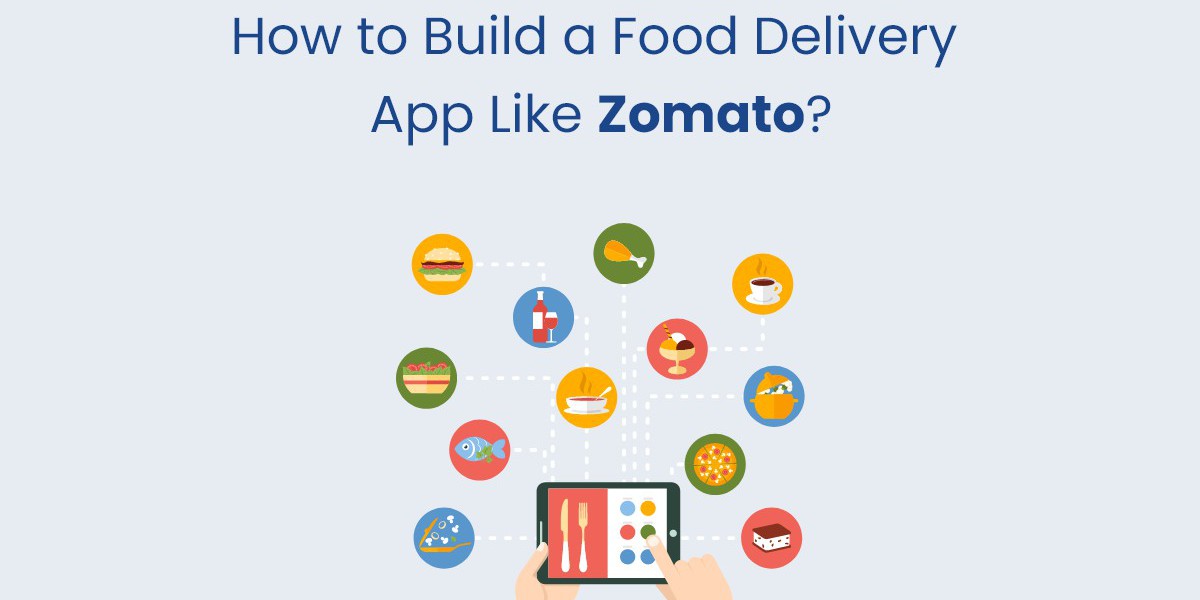The food delivery industry has witnessed a monumental shift in recent years, with mobile apps emerging as the primary medium for ordering food online. Among the plethora of food delivery apps available, Zomato clone app stands out as a market leader, revolutionizing the way people discover, order, and enjoy their favorite cuisines. If you're an aspiring entrepreneur looking to capitalize on the booming food delivery market, building a Zomato-like app can be a lucrative venture. In this comprehensive guide, we'll walk you through the step-by-step process of building a food delivery app like Zomato, from conceptualization to launch.
Understanding the Zomato Model
Before diving into the development process, it's crucial to understand the key components that make Zomato a formidable player in the food delivery space. Founded in 2008, Zomato started as a restaurant discovery platform, allowing users to explore dining options in their vicinity. Over time, it expanded its services to include online food ordering and delivery, transforming itself into a comprehensive food-tech giant. Zomato's success can be attributed to its user-friendly interface, extensive restaurant listings, real-time order tracking, and robust delivery network.
Key Features of a Zomato-Like App
Building a food delivery app like Zomato requires careful consideration of the essential features that define the user experience. Here are some key features to incorporate into your app:
User Registration and Profile Creation
Allow users to create accounts and profiles within the app, enabling them to save preferences, payment details, and order history for a personalized experience.
Restaurant Listings and Search
Provide users with a comprehensive database of restaurants in their vicinity, complete with menus, reviews, ratings, and photos. Implement robust search and filtering options to help users discover new dining options based on cuisine, location, price range, and dietary preferences.
Menu Customization and Ordering
Enable users to browse menus, customize orders, and add items to their cart with ease. Implement features like real-time price calculation, order modifications, and special instructions to enhance the ordering process.
Secure Payment Gateway
Integrate multiple payment options, including credit/debit cards, digital wallets, and net banking, with a secure payment gateway to facilitate seamless transactions. Implement SSL encryption and other security measures to safeguard user data and financial information.
Real-Time Order Tracking
Provide users with real-time updates on the status of their orders, from confirmation to delivery. Implement GPS tracking technology to enable users to track the location of their delivery in real time, enhancing transparency and reducing anxiety.
Ratings and Reviews
Allow users to rate and review restaurants based on their dining experience, helping others make informed decisions. Implement a robust rating system and moderation mechanism to ensure the authenticity and credibility of reviews.
Development Process
Now that you have a clear understanding of the features required let's outline the development process for building a food delivery app like Zomato:
Market Research and Planning
Conduct thorough market research to identify target demographics, competitors, and market trends. Define your unique selling proposition (USP) and create a comprehensive business plan outlining your app's features, revenue model, and marketing strategy.
Design and Prototyping
Create wireframes and mockups of your app's user interface (UI) and user experience (UX) design. Focus on creating a visually appealing and intuitive interface that enhances usability and engagement. Iterate on the design based on feedback from stakeholders and conduct usability testing to identify any usability issues.
Backend Development
Develop the backend infrastructure of your app, including servers, databases, APIs, and admin panels. Choose a scalable and robust technology stack that can handle the expected traffic and data volume. Implement features like user authentication, data storage, and third-party integrations to support the core functionality of your app.
Frontend Development
Build the front end of your app using modern web technologies like HTML, CSS, and JavaScript. Focus on creating responsive and mobile-friendly layouts that adapt to different screen sizes and devices. Implement interactive features like menus, search filters, and order tracking to enhance the user experience.
Testing and Quality Assurance
Conduct comprehensive testing of your app to identify and fix any bugs, errors, or usability issues. Perform functional testing, compatibility testing, and performance testing across multiple devices and platforms to ensure a seamless user experience. Solicit feedback from beta testers and iterate on the app based on their suggestions and observations.
Deployment and Launch
Deploy your app to the Google Play Store and Apple App Store following their respective guidelines and submission processes. Implement app store optimization (ASO) strategies to improve visibility and rankings in search results. Launch your app with a targeted marketing campaign to generate buzz and attract users.
Conclusion
Building a food delivery app like Zomato clone app requires careful planning, meticulous execution, and a deep understanding of user needs and market dynamics. By incorporating essential features, leveraging cutting-edge technologies, and following a systematic development process, you can create a powerful and competitive app that delights users and drives business growth. Whether you're a seasoned entrepreneur or a budding startup, embarking on the journey to build a Zomato-like app presents immense opportunities in the rapidly evolving food delivery landscape. With dedication, creativity, and perseverance, you can bring your vision to life and make a significant impact in the food-tech industry.



